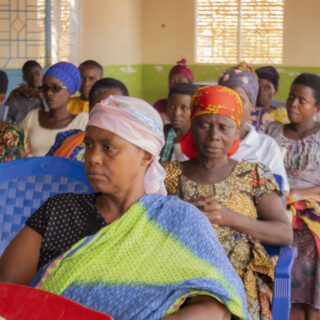
With 537 millions adults – in 10 living with diabetes and 6.7 millions of deaths in 2021- every 5 seconds according to the IDF Diabetes Atlas, it would be an understatement to say that diabetes is a public health problem just like any other.
Numbers are there, diabetes is no longer a western disease. Over 3 in 4 adults with diabetes live in low-and-middle income countries. Although Burundi does not have reliable data on diabetes, the information from studies and surveys carried out on small non-representative samples send shivers down your spine.
Thus, a study carried out at the CHUK(University Hospital of Kamenge) reports that the diabetes is the 3rd cause of hospitalization and 30% of amputations of lower extremities are related. Further screening surveys carried out in Buyenzi neighborhood and in the city of Ngozi report respectively a prevalence of diabetes of 14.5% and 12.5%.
Moreover, to be treated against diabetes costs an arm and a leg since in the event of renal insufficiency , the patient will be obliged to carry out a dialysis at least twice a week at the rate of a minimum of one million Burundian international francs.
What is diabetes?
Sugar being the body’s fuel, most of the food we eat are broken down into sugar (glucose) and released into our bloodstream. As the blood sugar has to remain at a certain level, when it goes up , it signals our pancreas to release insulin. Insulin plays a regulatory role by maintaining blood sugar levels at normal levels.Actually, it acts like a key to let the blood sugar into our body’s cells for use as energy.
Diabetes occurs when your body either doesn’t make enough insulin or can’t use it as well as it should. When there isn’t enough insulin or cells stop responding to insulin, too much blood sugar stays in your bloodstream.
Types of diabetes
Although the causes may differ from type to type, all types lead to excess sugar in the blood.There are three main types of diabetes:type 1, type 2 and gestational.
Type 1 diabetes can occur at any age,but most frequently in children and adolescents . When you have type 1 diabetes , your body produces very little or no insulin.
Type 2 diabetes is more common in adults( but more and more in children, teens and young adults)and accounts for around 90% of all diabetes cases. This type results from resistance developed by the body against insulin, making it uneffective.
Gestational diabetes: During pregnancy, some women become less sensitive to the effects of insulin. It usually disappears after giving birth.
Symptoms
Diabetes symptoms depend on how high your blood sugar is. Some people, especially if they have prediabetes, gestational diabetes or type 2 diabetes, may not have symptoms. In type 1 diabetes, symptoms tend to come on quickly and be more severe.
The general symptoms of diabetes may include:
- Increased hunger
- Increased thirstiness
- Weight loss
- Frequent urination
- Blurry vision
- Extreme fatigue
- Sores that don’t heal
- Risk factors
Different risk factors are associated with each type of diabetes. However, family history may play a role in all types.
Type 1 :You are more likely to get type 1 diabetes if you’re a child or teenager, you have a parent or sibling with the condition, or you carry genes.
Type 2: your risk of type 2 diabetes increases if you:
- Are overweight
- Are age 45 or older
- Have a sibling with the condition
- Aren’t physically active
- Have high blood pressure
- Had gestational diabetes
Gestational diabetes: your risk of gestational diabetes increase if you:
- Are overweight
- Are over age 25
- Had gestational diabetes during past pregnancy
- Have a family history of type 2 diabetes
- Complications
High blood sugar damages organs and tissues throughout your body. The higher your blood sugar is and the longer you live with it, the greater your risk for complications.
Complications associated with diabetes include:
- Heart disease
- Neuropathy(disease affecting the nerve system)
- Nephropathy(disease affecting the kidneys)
- Vision loss
- Hearing losss
- Foot damage such as infection and sores that don’t heal
- Prevention
Type 1 diabetes can’t be prevented. However, a healthy lifestyle is the key to prevent type 2 diabetes.Thus, these few tips might be helpful:
Eat healthy foods: Focus on fruits, vegetables and whole grains. Eat a variety to keep from feeling bored.
Get more physical activity: Try to get about 30 minutes of moderate activity on most days of the week. Or aim to get at least 150 minutes of moderate activity a week and try to lose excess weight.
Diabetes symptoms can be so mild that they’re hard to spot at first. Learn which signs should prompt a trip to the doctor.Diabetes is not a fatality, it can be managed with medication and lifestyle changes.



